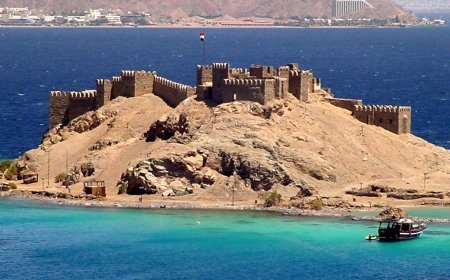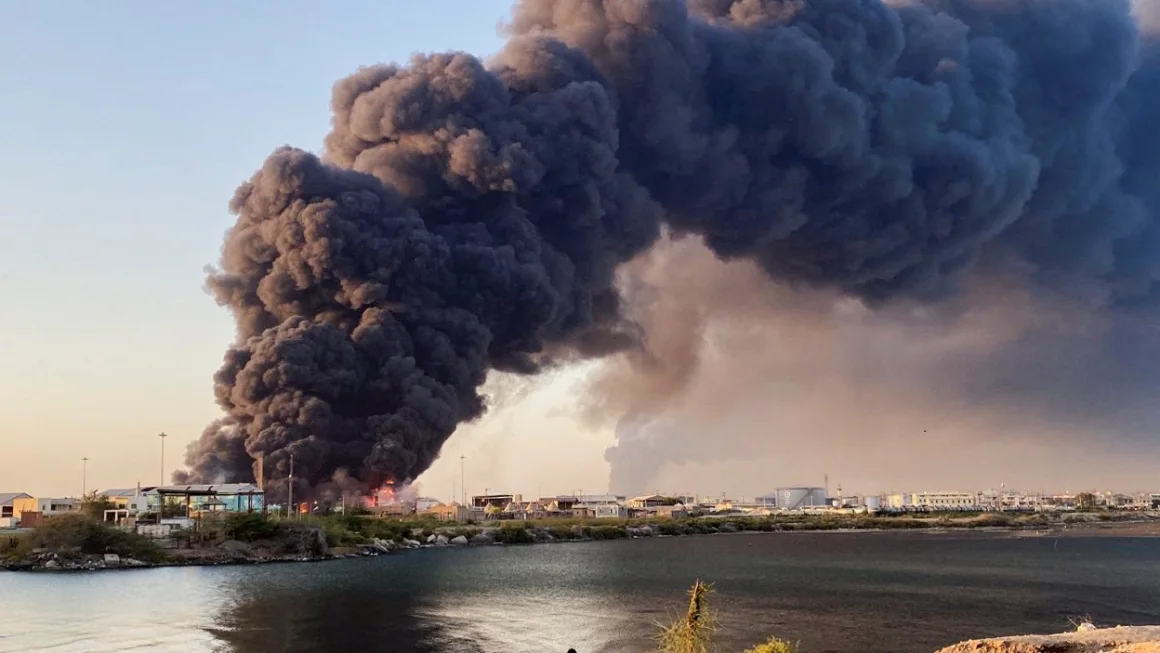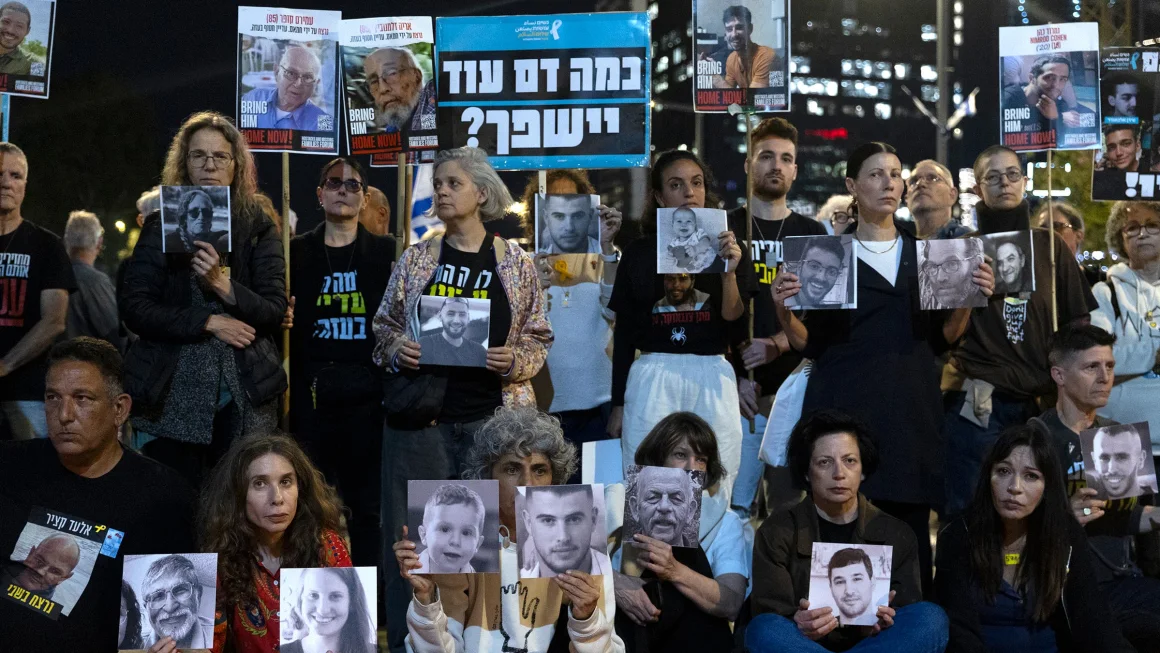Israeli military dropped bombs in ‘lethal proximity’ of at least 19 Lebanese hospitals, CNN analysis finds

The ground shook, windows shattered, and the cries of patients filled the air. An Israeli bomb had just struck Beirut’s southern suburbs in yet another near-nightly attack – this time hitting a building across the street from Lebanon’s biggest public hospital.
“I was treating a patient when the bomb went off. I fell over him from the shock of it,” said Mohammad Fouani, an emergency room nurse at Rafik Hariri University Hospital, recalling the aftermath of the October 21 attack. “The smoke was so thick; I could barely see my fellow colleagues.”
“Since the start of the war, every night has been difficult,” Fouani told CNN. “But this was the worst by far. It was the most painful.”
Israel said the strike hit a Hezbollah target, though the area was not covered in Israeli military evacuation orders for locations with alleged links to the Iran-backed group in the south of Beirut. At least 18 people, including four children, were killed and 60 injured in the residential building some 70 meters away from the hospital, Lebanon’s health ministry said.
Lebanon’s health sector has been in the thick of a ferocious Israeli air assault as Israel and Hezbollah trade fire in an ongoing war, with the country’s south and Beirut’s southern suburbs hardest hit. In the first month of its all-out air offensive in Lebanon, which began on September 23, Israeli strikes damaged 34 hospitals, killed 111 emergency medical technicians (EMTs), and hit 107 ambulances, according to data compiled by the Lebanese health ministry.
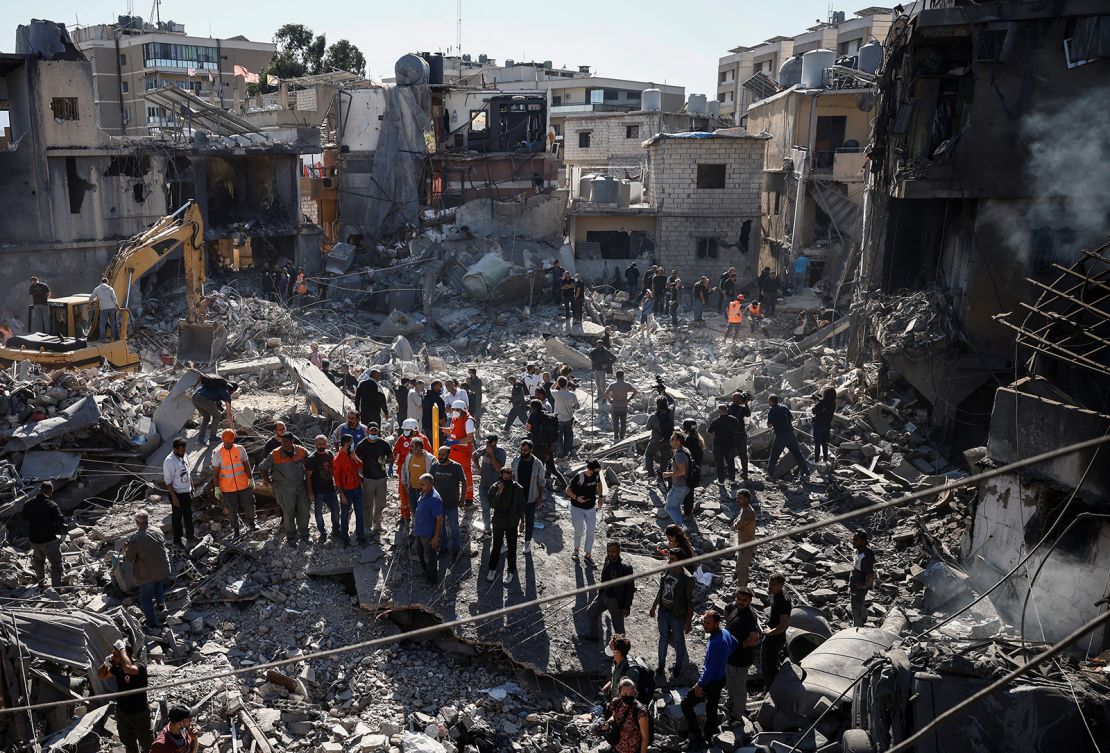
Around 20% of all hospitals registered with the health ministry in Lebanon have been damaged in a month of attacks, with most strikes landing in their vicinity, according to data compiled by medical authorities.
The Lebanese health ministry data and CNN’s analysis of airstrikes show that the Israeli military has dropped bombs within dangerous proximity of hospitals, which are protected under international law.
Responding to CNN’s request for comment, the Israel Defense Forces (IDF) said it operates in strict accordance with international law and accused Hezbollah of being deeply embedded in civilian areas. “Hezbollah strategically places its military assets in close proximity to medical facilities, such as hospitals and clinics, as part of its human shield strategy,” it said.
For a country that has been embroiled in many cycles of war and crises, the Lebanese healthcare sector has rarely been so vulnerable to firepower, the country’s health minister, Dr. Firass Abiad, told CNN. Abiad accused Israel of “weaponizing” access to healthcare and drew parallels to Gaza, where Israel has openly attacked hospitals, accusing them of links to Hamas.
“Health institutions are supposed to be sanctuaries,” said Abiad. “It’s clear that this is premeditated, that this is a state policy that Israel is following, whether in Gaza or in Lebanon.”
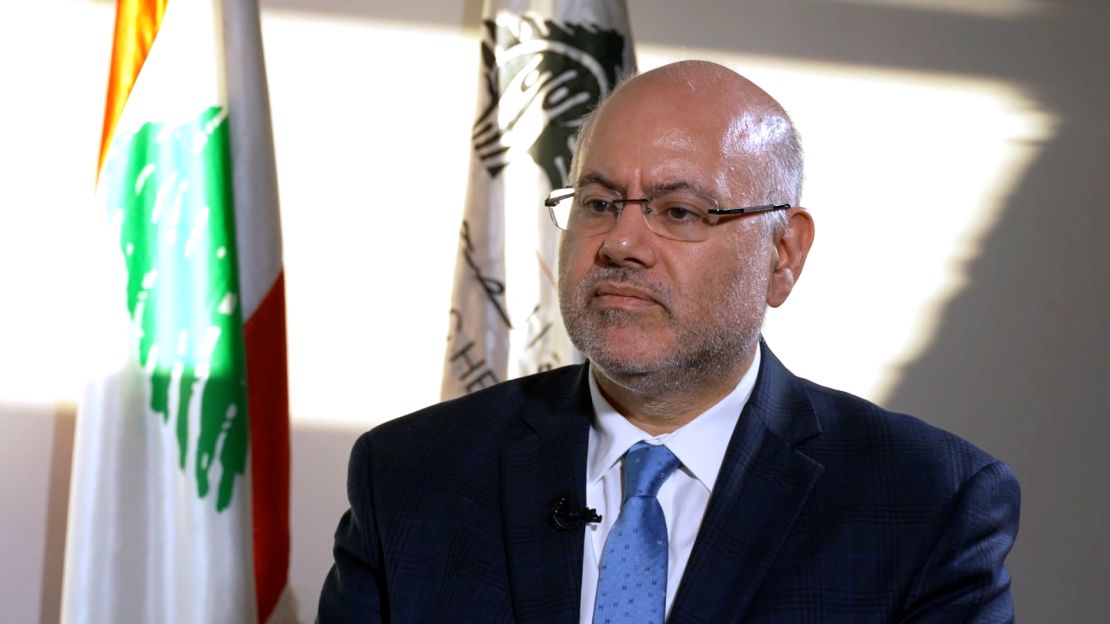
CNN has reviewed over 240 airstrikes in Lebanon and found that at least 24 hospitals were within a 500-meter danger zone – used by the Israeli military as its parameter for evacuation areas – of the bombs. Israel dropped munitions within what is known as a “lethal range” – 340 meters – of at least 19 hospitals, the analysis, which covered the first month of the war, showed.
CNN’s analysis only looked at airstrikes verified in publicly available imagery or declared in Israeli military evacuation orders between September 23 and October 23. That sample is smaller than the more than one thousand Israeli strikes estimated by the Armed Conflict Location and Event Data Project (ACLED), a crisis monitoring organization, to have hit Lebanon over the course of the month and so has likely produced a conservative estimate of hospitals within a dangerous or lethal range.
“Even a hospital that is not directly targeted can be damaged from the blast wave or fragmentation caused by a nearby strike,” Trevor Ball, a former senior explosive ordnance technician for the US military, told CNN. “Fragments can injure or kill people hundreds of meters away, meaning a strike hundreds of meters away could still injure or kill people that are not behind adequate protection.”
CNN shared with the IDF a list of coordinates for all 24 hospitals it assessed as having been within dangerous proximity of Israeli strikes, 16 of which were damaged according to data compiled by the Lebanese health ministry and medics. The IDF did not comment on CNN’s specific findings, but said it was only operating against Hezbollah, “not the Lebanese population or medical facilities” and took measures to mitigate harm to civilians.
Abiad, who is a veteran doctor and former hospital director, said the nearby strikes have had a devastating affect on healthcare. “Once you target so close to the area, it means that people are now afraid to come to the hospital,” Abiad told CNN. “Some people in the hospital would rather go home than receive treatment because they are worried that they will be targeted in hospitals.”
The UN special coordinator for Lebanon said on October 25 that “first responders heeding the call to help, including healthcare personnel and paramedics, have also been hard hit,” and called the number of attacks impacting healthcare facilities and personnel “alarming.”
The attacks on the first responders, said Abiad, has sent “a very chilling message: if you’re injured, you’re going to die.”
Israel has repeatedly accused Hezbollah of using ambulances to transport weapons, though it has not provided evidence. Many of the ambulances hit and first-responders killed in Israeli strikes were affiliated with Hezbollah’s civilian infrastructure. At least 12 Lebanese Civil Defense first responders and 16 Lebanese Red Cross paramedics have been killed in strikes. The IDF did not respond to CNN’s request for comment on attacks that have killed paramedics and emergency workers.
Since September 23, Israeli strikes have killed eight people inside the premises of four hospitals, and eight facilities have been forced to close, according to the health ministry.
Hospitals and other medical establishments are protected civilian objects under international humanitarian law. It is illegal, with few exceptions, to attack hospitals, ambulances or other health facilities, or to otherwise prevent them from providing care. In a report released on Wednesday, Human Rights Watch referred to Israeli attacks on healthcare workers in Lebanon as “apparent war crimes.”
The threat to Lebanon’s healthcare sector was felt most acutely on the night of October 21. As well as the strike that hit the Rafik Hariri University Hospital, Israel also claimed that another major hospital in the south of Beirut, Al Sahel General Hospital, was located above a Hezbollah bunker. Hours later, hospital staff and patients evacuated the facility for fear it would be hit. The next day, journalists toured the premises and said they found no evidence to support the claim.
Israel published a 3D graphic to show what they claimed was a Hezbollah underground facility storing cash and gold beneath the hospital. Officials at Sahel General Hospital vehemently denied the accusation, and Israel has not struck the hospital.
For the Lebanese, the graphic was reminiscent of imagery released by the Israeli military last year alleging the presence of a Hamas “command-and-control” center under Gaza City’s al-Shifa hospital. The hospital was later attacked by Israeli forces.
“For me, what’s really concerning is that the rhetoric from the Israelis is the same, especially when they talk about infrastructure beneath healthcare,” said Dr. Thaer Ahmad, an American physician who volunteered at Gaza’s Al Nasser hospital in Khan Younis earlier this year and is now working in Lebanon.
Ahmad said all healthcare workers he’s interacted with are “pessimistic,” and fear the health system will suffer the same fate as it has in Gaza.
“There are no red lines. There is no respect for international humanitarian law. We saw that in Gaza for the past 13 months and we’re seeing it in Lebanon,” Ahmad told CNN. “Are we heading in that same direction, are we actually going to see this repeat itself?”
Fragmentation zones
Israel’s air, ground and naval assault on Hezbollah in Lebanon has decimated the Iran-backed group’s military leadership and dealt harsh blows to its rank-and-file, as well as to its arsenal of weaponry. It has also killed hundreds of civilians, according to health authorities, and destroyed large swathes of civilian infrastructure.
Israel has regularly dropped 1,000-pound and 2,000-pound bombs on Lebanon, according to analysis of aftermath imagery by weapons experts, inflicting catastrophic damage to neighborhoods and towns. The Israeli military has argued that it has deployed these bombs as bunker busters to destroy Hezbollah’s underground infrastructure.
The weapons experts told CNN that Israel has also used the GBU-39, or small-diameter bomb, to take out single floors of multistorey buildings. The attacks have been concentrated in, though not restricted to, areas of Hezbollah dominance – namely the south and east of the country as well as the southern suburbs of Beirut.
The lethal fragmentation radius of these bombs puts nearby people and civilian structures, such as hospitals, at serious risk. When they are dropped, white-hot metal fragments can fly out in all directions, tearing through their surroundings. Known by experts as a “kill zone,” the area of exposure to injury or death around a target can range from 340 meters for small-diameter bombs, to 365 meters for 1,000 and 2,000 bombs, weapons experts say.
All eight hospitals in the southern suburbs of Beirut, known as Dahiyeh, fell within the lethal fragmentation zones of verified airstrikes. According to the health ministry, all of these healthcare facilities were damaged in the first month of Israel’s offensive since late September. Three hospitals on the edges of the area were also damaged, according to the ministry’s data.
Almost all of Hezbollah’s leadership were killed in Israeli strikes in Dahiyeh, the group’s seat of power. Several videos of attacks there have shown signs of secondary explosions – evidence that at least some of the targets were weapons depots.
Beirut’s southern suburbs, previously home to around a million people, were also a major flashpoint of Israeli attacks in the country’s last all-out war with Lebanon in 2006. Airstrikes there transformed large parts of the area into a seemingly endless stretch of rubble and detritus. Yet back then, the bombing campaign left hospitals in the south of Beirut comparatively unscathed.
Under international law, a hospital can lose its special protected status only if it is being used for military purposes. But the wounded and sick inside are still protected by the principle of proportionality, and time must be given for evacuation before an attack.
On October 1, an Israeli strike near al-Zahra University Hospital in Dahiyeh killed one person and injured two more inside the facility’s premises, according to the health ministry. Video of the attack analyzed by CNN found that the strike hit a building adjacent to the perimeter of the hospital, less than 50 meters away from the main building.
The analysis found that the weapon was likely a GBU-39.
The hardest-hit health facilities have been in the southernmost part of Lebanon, where the Israeli air assault has been the most intense and ground forces have been met with fierce resistance from Hezbollah fighters. It was in that region that the first of the country’s hospitals shuttered after the start of the all-out offensive.
In the town of Bint Jbeil, Israel struck a mosque which it described as a command center within the compound of the Salah Ghandour hospital on October 4. Ten people inside the hospital were injured, according to the health ministry, forcing it to close.
That day, an Israeli airstrike hit the premises of Marjayoun governmental hospital in a southern Christian town of the same name.
Two people were killed outside of the hospital’s emergency room, according to health minister Abiad. CNN spoke to the director of the hospital hours after it was evacuated.
“We held on for as long as we could,” Dr. Mones Kalakish told CNN as he was departing the Marjayoun area, which had been surrounded by intensive bombardment for weeks. “But this morning, we came under fire, and we had to evacuate. We were panicked and we were terrified.”
The night that a nearby strike rocked Beirut’s Rafik Hariri University Hospital there was panicked discussion among the staff about whether to evacuate. “Because of Gaza and what happened to the hospitals in the south and the rest of the country, our initial thought was that the hospital itself was hit,” said Rafik Hariri University Hospital director Jihad Saadeh. “But when we saw that it wasn’t a direct hit, we were reassured. We continued our work.”
For Nurse Foany, merely considering the evacuation was a terrifying thought. “Can you imagine what that was like? Imagine evacuating Lebanon’s largest public hospital, not just its staff but its sick and its injured in a single night,” he said. “It was a horrific thought.”
CNN’s Rachel Wilson, Abeer Salman and Mohammad Tawfeeq contributed to this report. This story has been updated.
The post Israeli military dropped bombs in ‘lethal proximity’ of at least 19 Lebanese hospitals, CNN analysis finds appeared first on Egypt Independent.
What's Your Reaction?
 Like
0
Like
0
 Dislike
0
Dislike
0
 Love
0
Love
0
 Funny
0
Funny
0
 Angry
0
Angry
0
 Sad
0
Sad
0
 Wow
0
Wow
0









